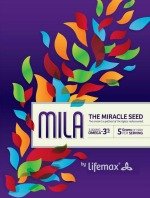Bifocal Lenses and Trifocal Lenses: What Are Your Options?
It was not all that long ago that anyone who needed bifocal lenses for close-up vision had to wear Franklin or "executive" bifocals.
These were the eyeglasses with the line that went all the way across the lens. In the 1960's and 1970's, opticians started making lenses with a smaller, half-moon segment for near vision. If you needed additional vision correction to see objects about an arm's length away, you were just out of luck.
In the twenty-first century, however, there are many options in bifocal lenses for vision correction.
The segment of the lens that allows for correction of near vision can be any one of several shapes:
- A round area at the bottom of the lens,
- A rectangular area at the bottom of the lens,
- A half-moon, also known as a straight-top, flat-top, or D segment,
- Or the entire bottom half of the lens, the old Franklin, "executive," or E style lenses.
And the options for vision correction are not limited to just bifocal lenses. Lenses can also be made as trifocals, with three points of focus for near, far, and intermediate vision.
Trifocal lenses have an addition segment above the bifocal for seeing things in the not-near and not-far intermediate zone, generally about an arm's length away.
What do you need to see in this intermediate zone? Computers are a good example. The dashboard of your car also lies in your intermediate vision zone.
If you have age-related presbyopia, and you need to see your computer screen, monitor the gauges on your car, hold a hymnal, navigate your car with either your GPS or an old-fashioned map, read your notes when you give a speech, chances are that you could benefit from trifocal vision correction.
Trifocals can make a tremendous difference in the ease with which you can read or do detail work about 18 inches (45 cm) in front of you.
How do you know if you need trifocals? You could just try them out, of course, but you can also look at the prescription for your bifocal lenses. If the prescription for your near vision correction is +2.00 or stronger, you probably won't be able to see at arm's length well with just a bifocal.
This doesn't mean you can't see anything at all with just bifocal correction, but working at a computer all day will require raising the chin and can cause neck pain.
Both bifocals and trifocals are made with numerous options for the lenses. The lenses can be made from polycarbonate for impact resistant, scratch resistant polycarbonate. This is a good material for anyone who tends to drop and break lenses. Polycarbonate also provides UV protection.
There are also high-index plastic lenses designed for people who require strong prescriptions. These lenses are thinner than standard. Aspheric lenses are made with differing degrees of curve over the surface of the lens, also allowing the lens to be thinner and flatter than standard.
Photochromic lenses change from clear to tinted when exposed to sunlight, and polarized lenses block glare. And the lenses can be made with anti-reflective, scratch-resistant, tinted, or mirror coatings.
Having trouble making choices from all the available options? Ask your optician to put your prescription in a trial frame. Look through bifocals and trifocals before you buy them. Not everybody likes trifocals. There can be double lines and double images, at least while you are getting used to them.
There is less area in the lens to look at distant objects in trifocals. Bifocal and trifocal lenses can be functional and attractive. Don't hesitate to ask your dispensing optician about all the options that can work for you.





